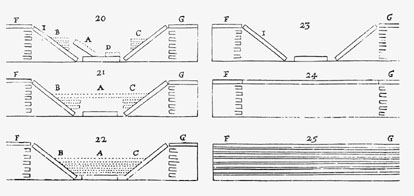

 | Page 1210 |  |
1667 and a bishop in 1677 and died in Schwerin in Germany. His discovery of the parotid salivary duct was named “Stensen’s duct” for him, as is his work on the faces and angles of crystals, which is known as “Steno’s law.”

Drawing by Nicholas Steno in 1671, illustrating his theory of how rock strata can fold and produce different formations
(Image Select)
References
Schnapp, A. 1996. The Discovery of the Past. London: British Museum Press.
(1805–1852)
John Lloyd Stephens was born in New Jersey and studied classics at Columbia College, after which, in 1822, he studied law. He was a successful lawyer in New York City for eight years until ill health caused him to embark on a two-year voyage to the Mediterranean and eastern Europe. He began to publish accounts of his travels, which were so successful that he became known as “the American traveler.” He met and befriended the English architect and draftsman frederick catherwood and collaborated with him on Incidents of Travel in Egypt, Arabia, Petraea, and the Holy Land (1837) and Incidents of Travel in Greece, Turkey, Russia, and Poland (1838). Both books proved to be popular and made Stephens enough money to finance his first expedition to Central America.
In 1839, with personal recommendations from U.S. President Martin Van Buren and in the company of Catherwood, Stephens traveled to belize and then through the dense rainforest of the Yucatán to the site of Copán in western Honduras, which had to be cut out of the forest. He left Catherwood to draw the site and traveled on to guatemala and el salvador, then to costa rica and nicaragua, and then back to Guatemala where he again met up with Catherwood. Together they traveled to mexico under difficult and dangerous circumstances via palenque, a classic Maya site in Chiapas, and visited the ancient city of Uxmal. By this point, the health of both was dire and they were carried on stretchers to the boat back to New York. The resulting book, Incidents of Travel in Central America, Chiapas, and Yucatan (1841, 2 vols.), with text by Stephens and illustrations by Catherwood, became a best-seller.
Although Stephens was no archaeologist, he had seen enough archaeological monuments in Egypt, the Near East, and eastern Europe to understand that the New World sites were astounding and rivaled Old World sites in their artistic achievements. He was more than able to convey their power and significance and his own excitement, and his books attracted great interest in the United States.
 |  |